Abstract
The relationship between personal and domestic hygiene behaviour and hospitalized childhood diarrhoea was examined in a case-control study of 356 cases and 357 controls from low-income families in metropolitan Manila. Indices of hygiene behaviour were defined for overall cleanliness, kitchen hygiene, and living conditions. Only the indices for overall cleanliness and kitchen hygiene were significantly associated with diarrhoea. An increasing excess risk of hospitalization with severe diarrhoea was noted as the ratings for standards of hygiene became lower, and this excess risk persisted even after controlling for confounding variables. The implications of our findings for the control of diarrhoeal disease are discussed.
Full text
PDF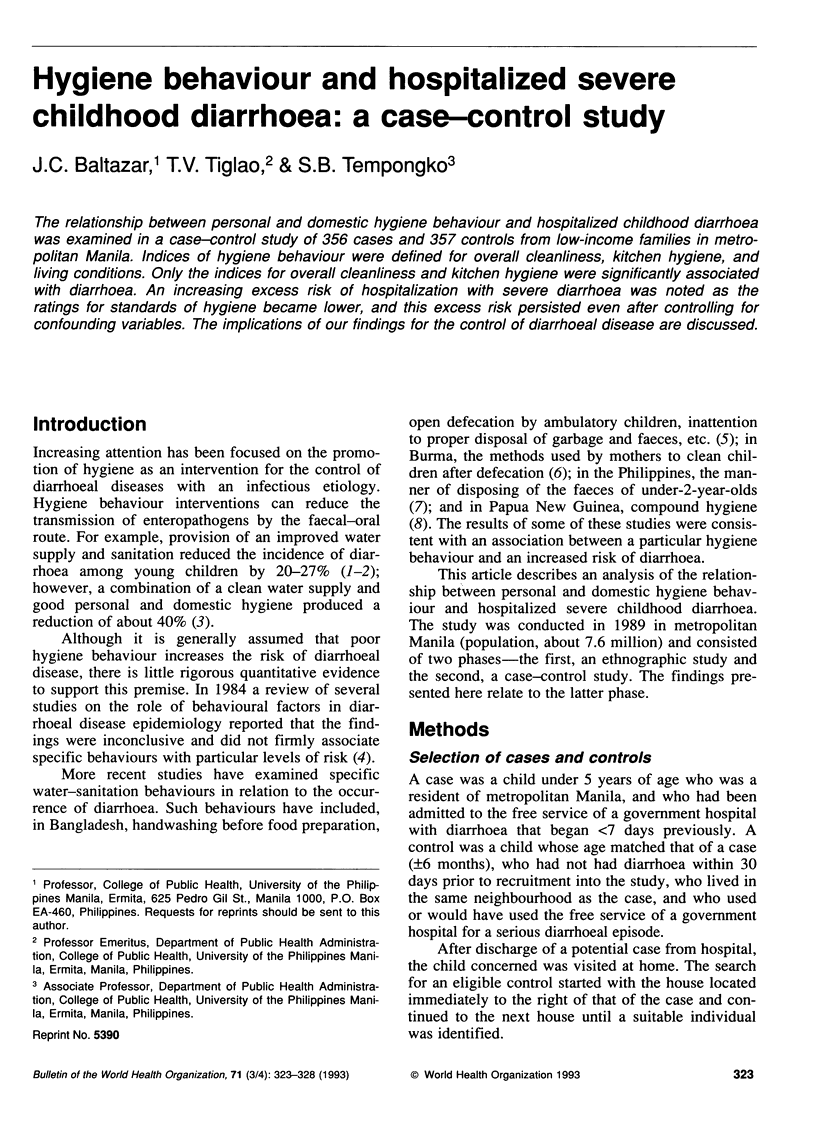
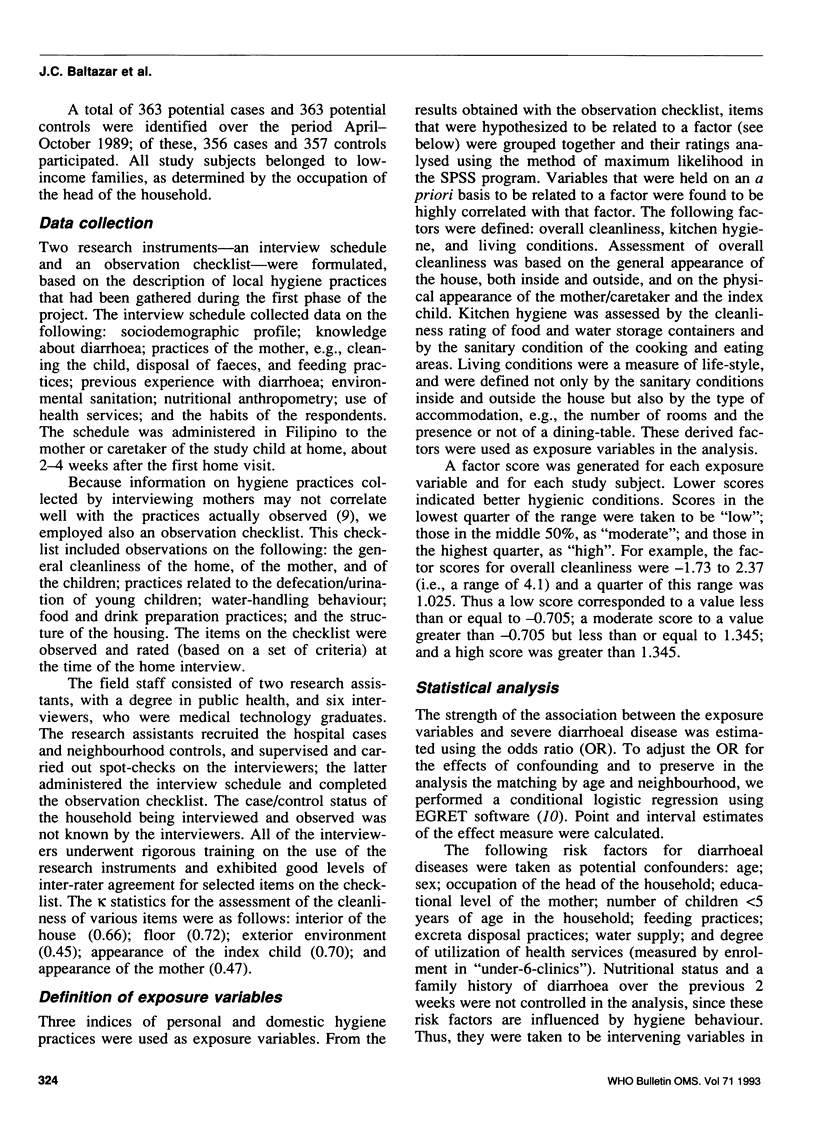
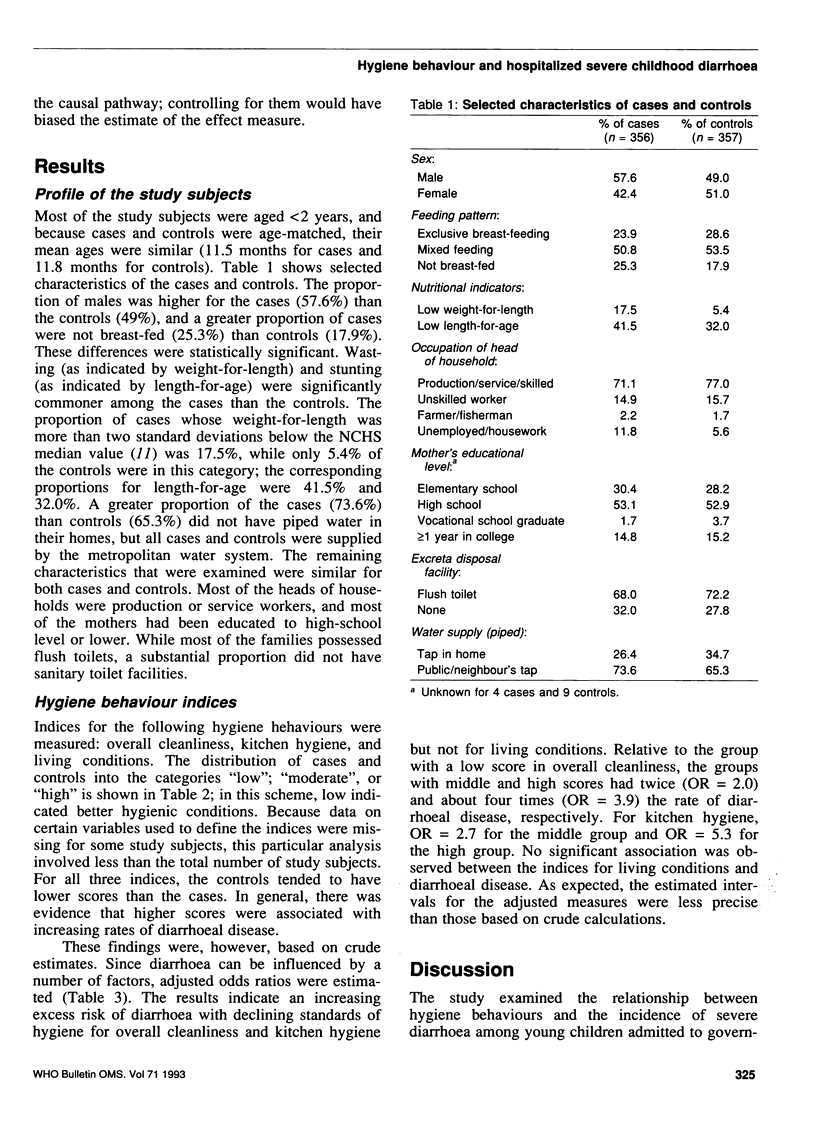
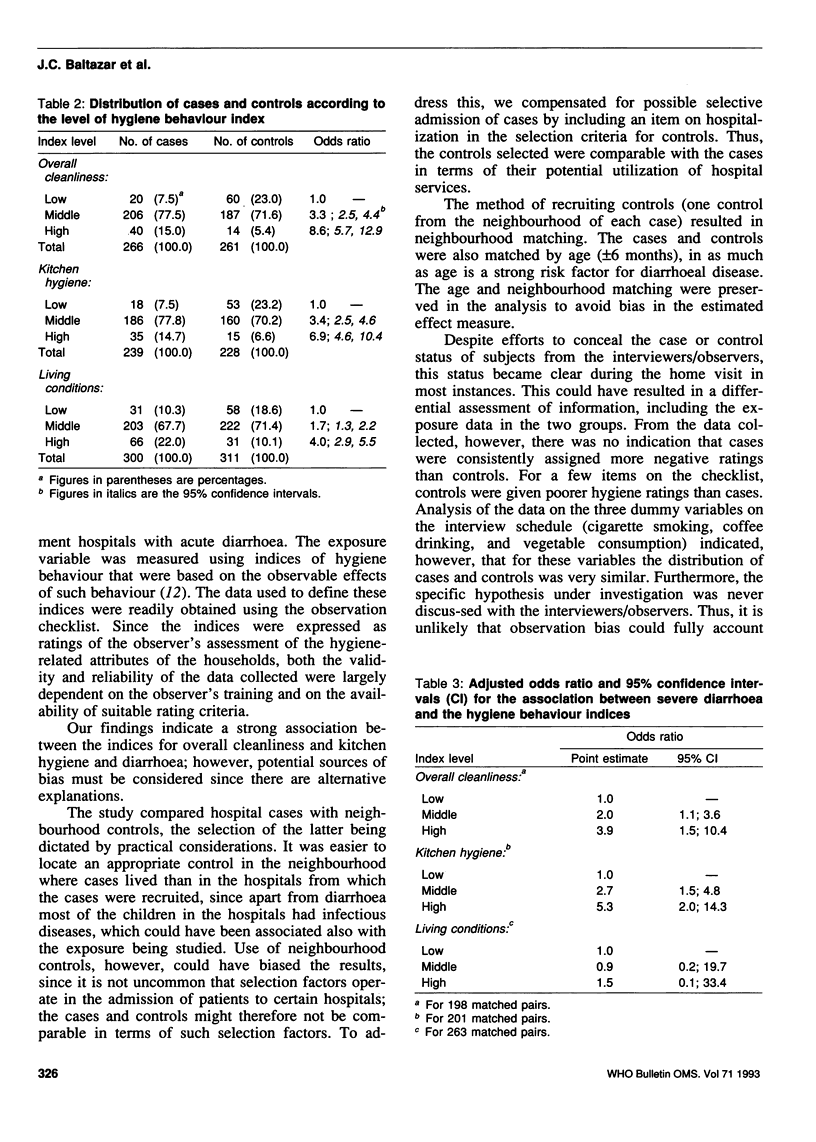
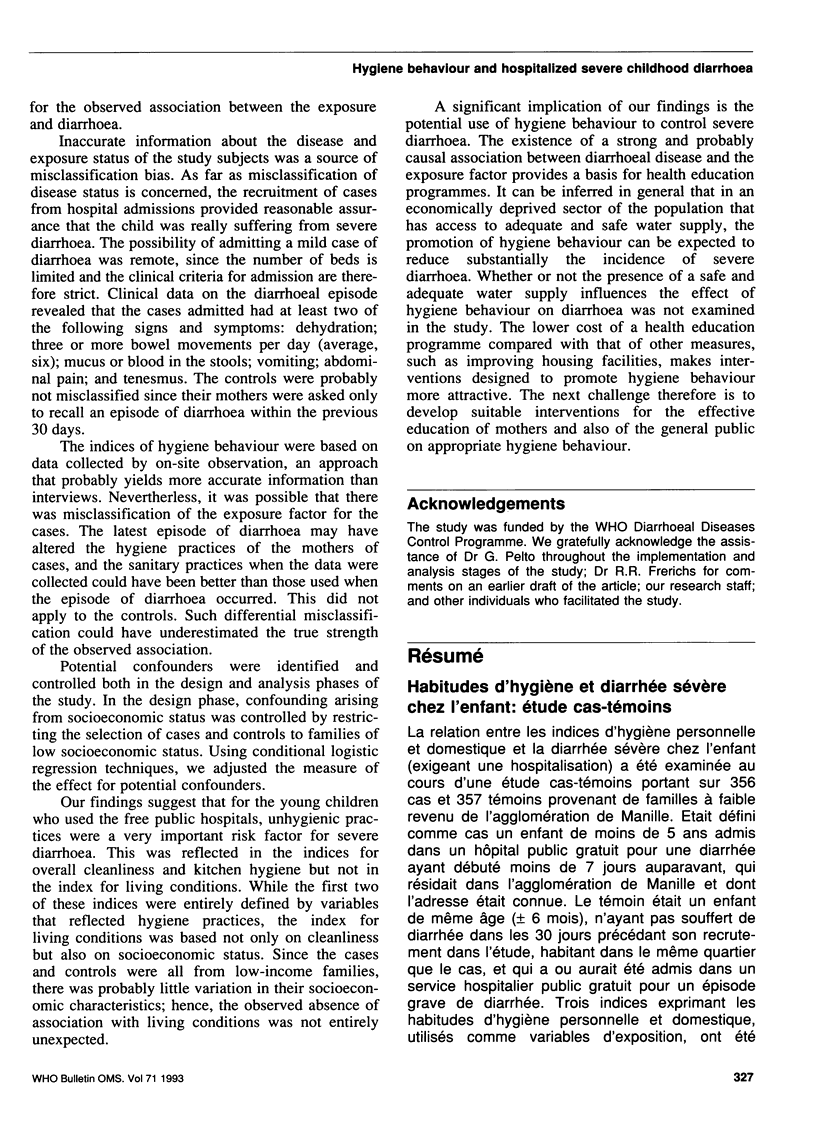
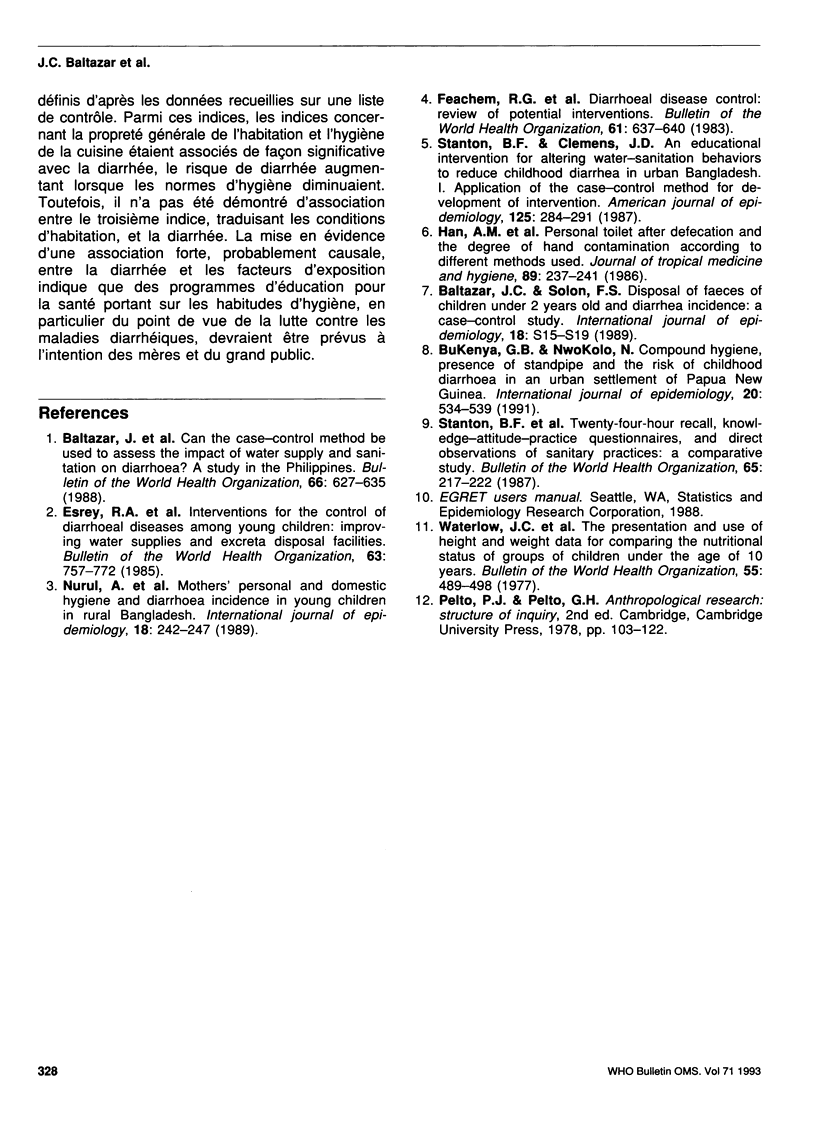
Selected References
These references are in PubMed. This may not be the complete list of references from this article.
- Aung Myo Han, Khin Nwe D. o., Tin Aye, Thein Hlaing Personal toilet after defaecation and the degree of hand contamination according to different methods used. J Trop Med Hyg. 1986 Oct;89(5):237–241. [PubMed] [Google Scholar]
- Baltazar J., Briscoe J., Mesola V., Moe C., Solon F., Vanderslice J., Young B. Can the case-control method be used to assess the impact of water supply and sanitation on diarrhoea? A study in the Philippines. Bull World Health Organ. 1988;66(5):627–635. [PMC free article] [PubMed] [Google Scholar]
- Bukenya G. B., Nwokolo N. Compound hygiene, presence of standpipe and the risk of childhood diarrhoea in an urban settlement of Papua New Guinea. Int J Epidemiol. 1991 Jun;20(2):534–539. doi: 10.1093/ije/20.2.534. [DOI] [PubMed] [Google Scholar]
- Clemens J. D., Stanton B. F. An educational intervention for altering water-sanitation behaviors to reduce childhood diarrhea in urban Bangladesh. I. Application of the case-control method for development of an intervention. Am J Epidemiol. 1987 Feb;125(2):284–291. doi: 10.1093/oxfordjournals.aje.a114528. [DOI] [PubMed] [Google Scholar]
- Esrey S. A., Feachem R. G., Hughes J. M. Interventions for the control of diarrhoeal diseases among young children: improving water supplies and excreta disposal facilities. Bull World Health Organ. 1985;63(4):757–772. [PMC free article] [PubMed] [Google Scholar]
- Feachem R. G., Hogan R. C., Merson M. H. Diarrhoeal disease control: reviews of potential interventions. Bull World Health Organ. 1983;61(4):637–640. [PMC free article] [PubMed] [Google Scholar]
- Stanton B. F., Clemens J. D., Aziz K. M., Rahman M. Twenty-four-hour recall, knowledge-attitude-practice questionnaires, and direct observations of sanitary practices: a comparative study. Bull World Health Organ. 1987;65(2):217–222. [PMC free article] [PubMed] [Google Scholar]
- Waterlow J. C., Buzina R., Keller W., Lane J. M., Nichaman M. Z., Tanner J. M. The presentation and use of height and weight data for comparing the nutritional status of groups of children under the age of 10 years. Bull World Health Organ. 1977;55(4):489–498. [PMC free article] [PubMed] [Google Scholar]


